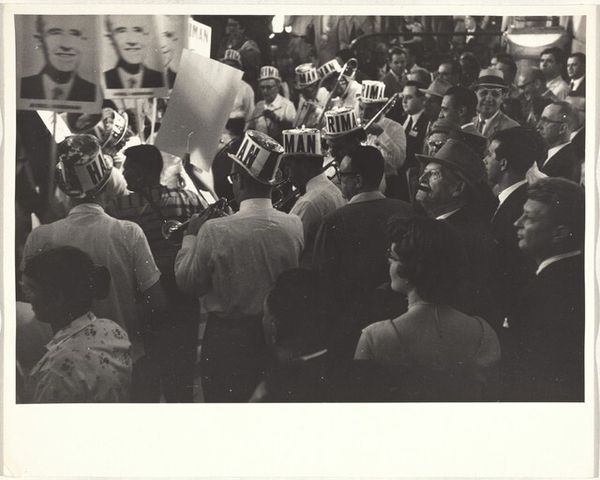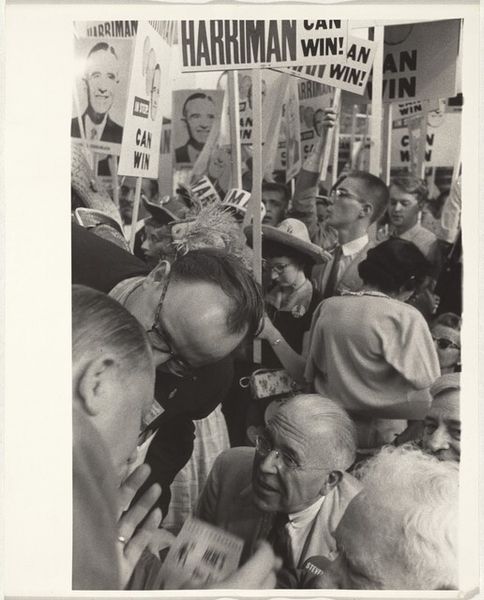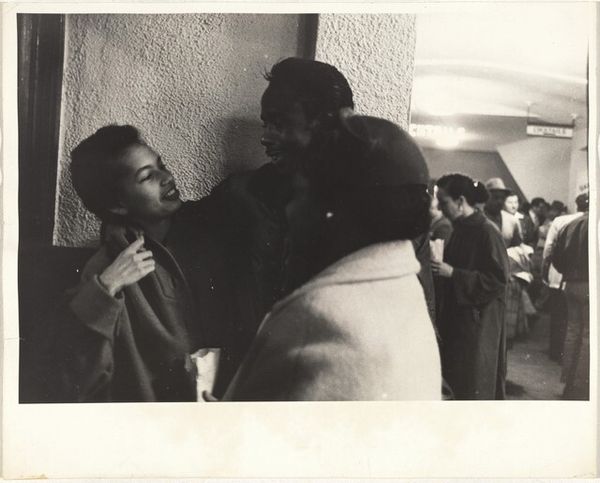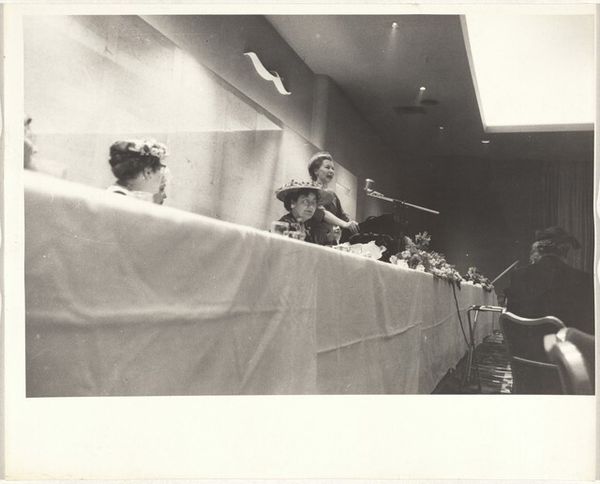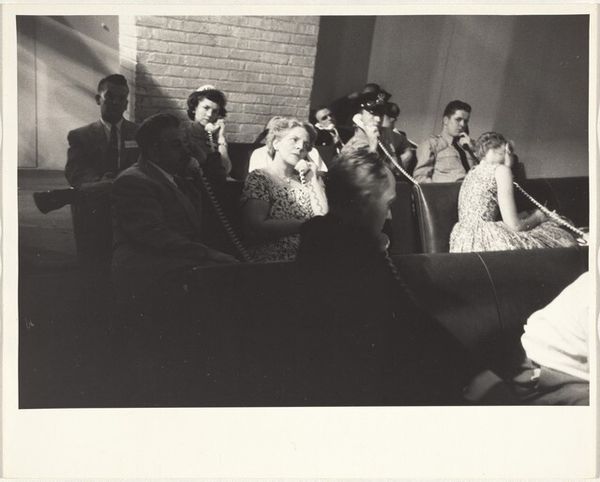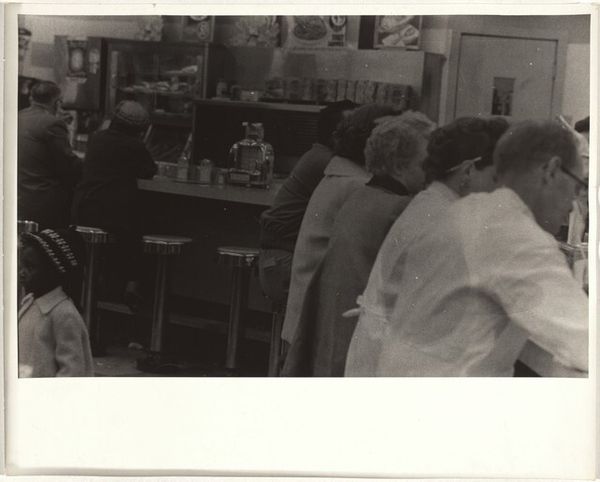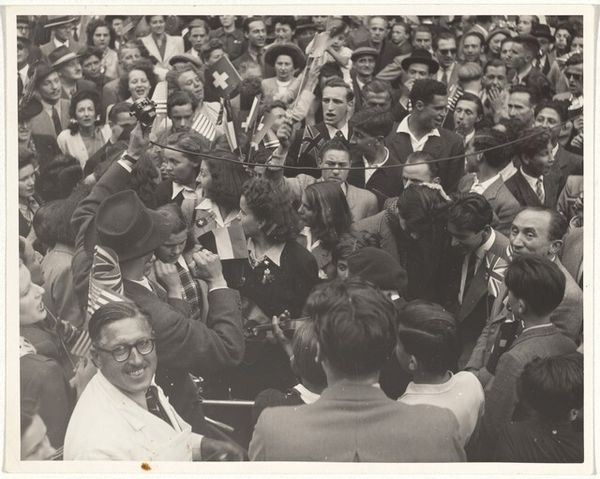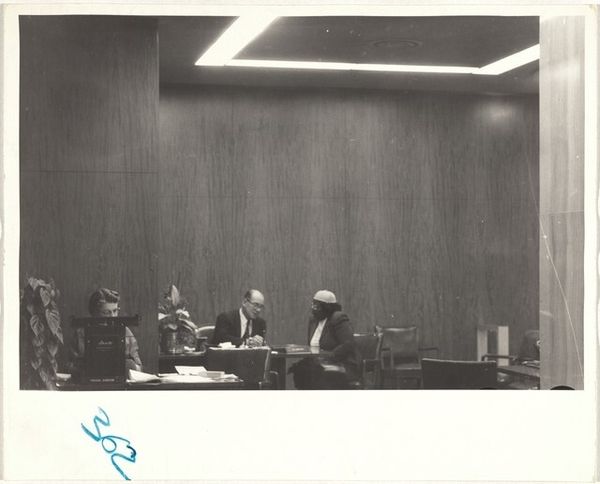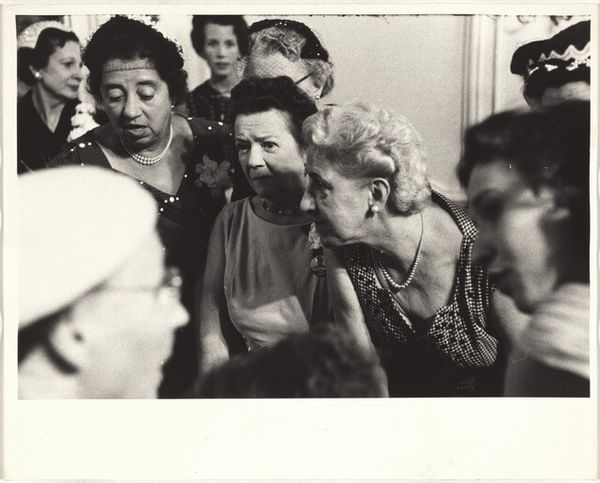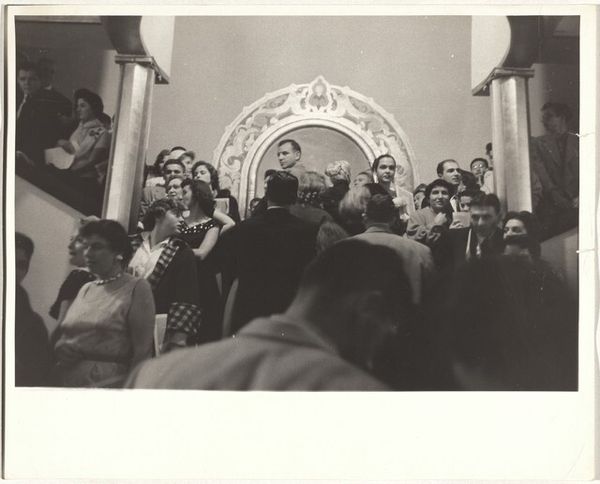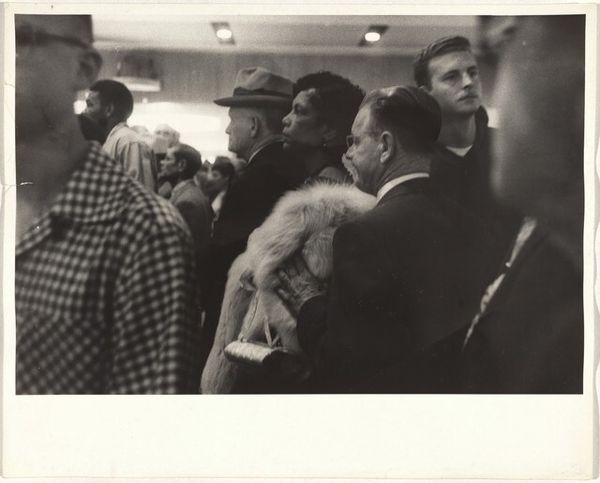
Dimensions: sheet: 20.2 x 25.2 cm (7 15/16 x 9 15/16 in.)
Copyright: National Gallery of Art: CC0 1.0
Curator: Robert Frank's gelatin silver print, "Dinner—Los Angeles," made between 1955 and 1956, certainly presents a scene teeming with energy. Editor: Yes, it has a restless quality. The tilted horizon, the flurry of faces and gestures... the entire composition vibrates. The textures—from the stark white tablecloth to the deep shadows in the clothing—amplify the drama. Curator: Let’s consider Frank’s distinctive use of light. The high contrast, nearly bleaching the table in the foreground, flattens the subjects while drawing the eye to key compositional aspects. It creates a social commentary by placing the social sphere within that visual syntax. Editor: Absolutely. And it feels so characteristic of that postwar period. The fashions, the accessories. Those hats! I find it interesting how a seemingly simple photograph can reveal social status and anxieties. Are these people celebrating, protesting, or simply existing within the frame of American cultural expectations? Curator: Frank had the rare ability to expose contradictions and tensions. It almost doesn’t matter what their faces express, but where each person has been strategically placed. Their collective dynamic as a unit forms a sort of social tableau. Editor: The fact that so many of their faces are partly obscured adds a layer of intrigue. It emphasizes that these individuals are, in effect, acting parts within a larger performance. And who is truly seeing or understanding one another amid all the noise and theatrical attire? Curator: A wonderful interpretation. Perhaps Frank’s lens presents something unsaid. It's his interpretation, too. His commentary using the materials. What else can one hope for from modernist imagery? Editor: Perhaps its ability to make the spectator engage with an archive of cultural assumptions—even decades after its making—reminds us to ask critical questions about what we consider "normal". This work’s mood feels pertinent and somehow still lingering within today's gatherings and power structures.
Comments
No comments
Be the first to comment and join the conversation on the ultimate creative platform.

